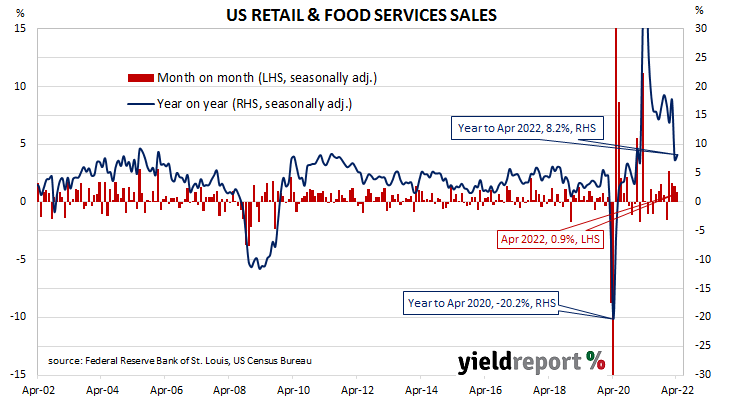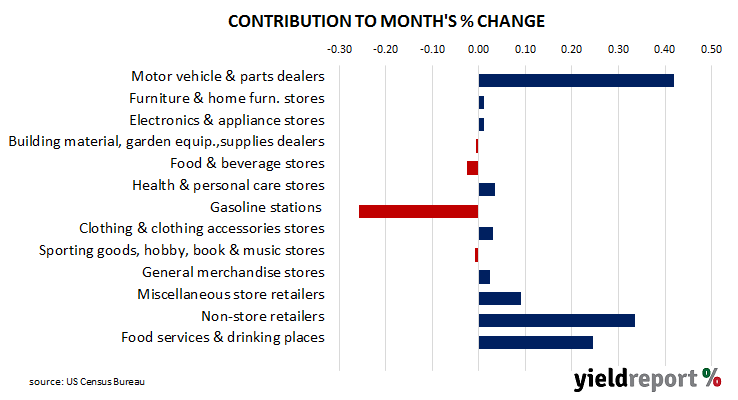Summary: US retail sales up 0.9% in April; rise a touch lower than expected; March figure revised up; savings, credit maintains consumption pattern; rises in eight of twelve retail categories; vehicles & parts” segment largest single influence.
US retail sales had been trending up since late 2015 but, commencing in late 2018, a series of weak or negative monthly results led to a drop-off in the annual growth rate below 2.0%. Growth rates then increased in trend terms through 2019 and into early 2020 until pandemic restrictions sent it into negative territory. A “v-shaped” recovery then took place which was followed by some short-term spikes as federal stimulus payments hit US households in the first and second quarters of 2021.
According to the latest “advance” numbers released by the US Census Bureau, total retail sales increased by 0.9% in April. The rise was a touch lower than the 1.0% gain which had been generally expected and well short of March’s 1.4% after it was revised up from 0.5%. On an annual basis, the growth rate accelerated from March’s revised figure of 7.3% to 8.2%.
“In April, headline sales were flattered by a 2.2% increase in auto sales while gains in the core number were broad based,” said NAB currency strategist Rodrigo Catril. “Notwithstanding the increase in prices, the use of savings and credit are helping maintain a strong US consumption pattern.”
The figures were released on the same day as April’s industrial production figures and US Treasury bond yields moved considerably higher, especially at the short end. By the close of business, the 2-year Treasury yield had jumped 13bps to 2.69%, the 10-year yield had gained 10bps to 2.99% while the 30-year yield finished 8bps higher at 3.18%.
Eight of the twelve categories recorded higher sales over the month. The “Motor vehicles & parts dealers” segment provided the largest single influence on the overall result, rising by 2.2% for the month but declining by 1.7% over the year to April. “Non-store retailer” sales increased by 2.1% over the month and by 12.7% over the year.
The non-store segment includes vending machine sales, door-to-door sales and mail-order sales but nowadays this segment has become dominated by online sales. It now accounts for nearly 16% of all US retail sales and it is the second-largest segment after vehicles and parts.



